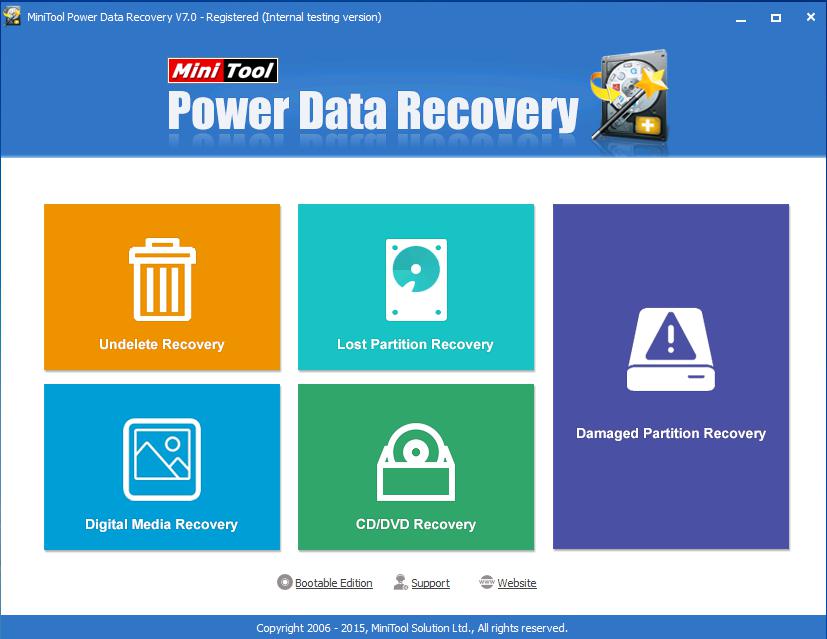Pre-Installation Checklist
Four Points Included in the Pre-installation Checklist

Before you install Power Data Recovery on the host computer, it's very important for you to complete four items on the following pre-installation checklist:
1. Do not install this software on the bad device and remember the golden rule of data recovery: never change anything on the bad device!
2. Make sure you have enough memory on the host computer for the software. The application only requires about 16 megabytes of space, but we recommend as much as 64 MB of free RAM (depending on the size of data and partition which will be recovered).
3. Make sure you have enough free space on your good device. You need more space than the size of your lost data. Here's a list of everything that may need to be saved to the good device before and during a recovery session:
The lost data. You should plan on recovering at least as much data as that was lost on the bad device. And you may need even more free space than the space occupied by your lost data, because Power Data Recovery may recover files and folders you intentionally deleted in the past. If you decide to recover all found folders and files, you will have more files than what you used to 'see' before the failure/data loss.
If you are using a single computer as the host computer and the good device (that is to say, you plan to save your lost data to the same computer on which you have installed Power Data Recovery), you must have enough room for the application itself. It takes up only a few megabytes of space, so it probably won't cause any memory issues. Regardless of this, it never damages data when it checks your available memory.
Temporary files created by Power Data Recovery may track your session progress. During a recovery session, this data recovery tool creates temporary working files on the good device. These files could take up dozens of megabytes of space, depending on the size of the device and amount of recovered data.
If you want to save just a small amount of data, you can use a floppy disk as the destination drive; otherwise, you need to use a local or network drive. If you don't have enough free space, you may switch to a host computer or good device with more free space.
4. The last point of the pre-installation checklist: close all other applications to improve performance during installation. Although not necessary, this is highly recommended.
After reading this useful pre-installation checklist, users could start installing this powerful software now.

Before you install Power Data Recovery on the host computer, it's very important for you to complete four items on the following pre-installation checklist:
1. Do not install this software on the bad device and remember the golden rule of data recovery: never change anything on the bad device!
2. Make sure you have enough memory on the host computer for the software. The application only requires about 16 megabytes of space, but we recommend as much as 64 MB of free RAM (depending on the size of data and partition which will be recovered).
3. Make sure you have enough free space on your good device. You need more space than the size of your lost data. Here's a list of everything that may need to be saved to the good device before and during a recovery session:
The lost data. You should plan on recovering at least as much data as that was lost on the bad device. And you may need even more free space than the space occupied by your lost data, because Power Data Recovery may recover files and folders you intentionally deleted in the past. If you decide to recover all found folders and files, you will have more files than what you used to 'see' before the failure/data loss.
If you are using a single computer as the host computer and the good device (that is to say, you plan to save your lost data to the same computer on which you have installed Power Data Recovery), you must have enough room for the application itself. It takes up only a few megabytes of space, so it probably won't cause any memory issues. Regardless of this, it never damages data when it checks your available memory.
Temporary files created by Power Data Recovery may track your session progress. During a recovery session, this data recovery tool creates temporary working files on the good device. These files could take up dozens of megabytes of space, depending on the size of the device and amount of recovered data.
If you want to save just a small amount of data, you can use a floppy disk as the destination drive; otherwise, you need to use a local or network drive. If you don't have enough free space, you may switch to a host computer or good device with more free space.
4. The last point of the pre-installation checklist: close all other applications to improve performance during installation. Although not necessary, this is highly recommended.
After reading this useful pre-installation checklist, users could start installing this powerful software now.
